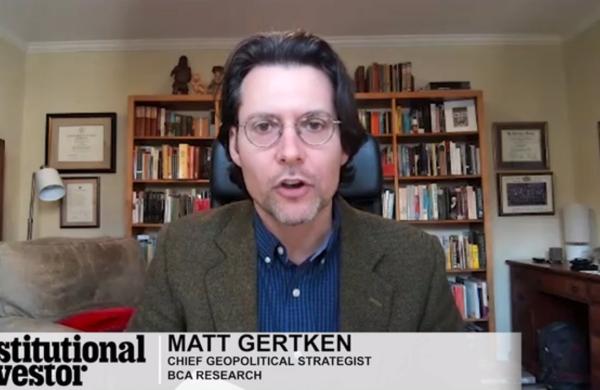When Dai Xianglong, a former governor of China's central bank, became mayor of Tianjin in January 2003, Standard Chartered's China chairman, Lance Browne, sent him a congratulatory note. Tongue in cheek, he wrote to his old friend that he expected Tianjin "would now be turned into a major financial center in north China," recalls Browne.
Dai soon unveiled precisely such a plan and also began lobbying for a new national bank to be headquartered in the bustling port city. His plan to turn the city into a financial center remains a distant dream, but the bank -- Tianjin-based China Bohai Bank -- was founded amid much fanfare in Beijing's Great Hall of the People on September 6. Chinese Premier Wen Jiabao and U.K. Prime Minister Tony Blair were in attendance, as was Browne, who had fended off numerous foreign competitors to enable StanChart to buy a 19.99 percent, $123 million stake in the bank.
Bohai marks the first foreign investment in a new Chinese bank since the Communists came to power in 1949, and it is the first national joint stock bank to be set up since 1996. "I and my colleagues thought it was the best opportunity in China," StanChart chairman Bryan Sanderson told reporters outside the Great Hall of the People.
The bank's other major shareholders are state-owned Tianjin Teda Investment Holding, with 25 percent, and China Ocean Shipping, with 13.67 percent. Shanghai Baosteel Group and State Development & Investment each hold 11.67 percent stakes, Tianjin Trust & Investment has a 10 percent stake, and Tianjin Shanghui Investment (Holding) holds 8 percent.
Bohai is "going to be another major Chinese bank," says Browne. "It seemed an excellent opportunity to go for a start-up with a national license. When a regulator approves a new bank, it has to be a model bank for China."
So far, Bohai Bank consists of an office in Tianjin and a vague plan to use $617 million in initial capital to build a universal national bank. It is scheduled to begin operations early next year and at first will focus on the Bohai Bay area surrounding Tianjin before expanding nationally, concentrating on the Yangtze and Pearl river delta regions.
Bohai Bank's nominated chairman is Yang Zilin, a former CEO of Bank of China (Hong Kong) and, most recently, chairman and president of the Export-Import Bank of China. Bohai's CEO will be Ma Teng, former head of credit card business at Industrial and Commercial Bank of China. StanChart has nominated as deputy chairman Elizabeth Chua, chief of its corporate business in Singapore, and as deputy CEO Rolf Berweger, who oversees corporate and institutional banking at its Beijing branch. StanChart will help Bohai with product development, risk management and governance.
In establishing Bohai, StanChart is bucking the recent trend of global banks rushing to buy minority equity stakes in established banks. Bank of Americas spent $3 billion to buy a 9 percent stake in China Construction Bank; Merrill Lynch, Royal Bank of Scotland and Hong Kong investor Li Ka-shing teamed up to purchase a 10 percent stake in Bank of China for $3.1 billion; and Germany's Allianz, American Express and a Goldman Sachs private equity fund have spent $3.1 billion to purchase 10 percent of Industrial and Commercial Bank of China. In late September, UBS agreed to buy 1.7 percent of Bank of China for $500 million.
HSBC got into the market much earlier by taking a 20 percent stake in Bank of Communications, China's fifth-largest bank, for $1.7 billion in June 2004, and an 11 percent stake in Bank of Shanghai for $62.6 million in 2003. HSBC's Hong Kongbased subsidiary, Hang Seng Bank, bought a 16 percent stake in Fuzhou- based Industrial Bank for $209 million early this year. Citigroup purchased 5 percent of Shanghai Pudong Development Bank for $72 million in 2003 and is now negotiating to increase its stake.
But like its competitors, StanChart also plans to take an additional minority stake in an existing bank. Though Browne would not be specific, it has been widely reported that StanChart has held substantial discussions with China Everbright Bank, the country's tenth-largest bank, with some $48 billion in assets.
For StanChart, Bohai's considerable upside is that it starts with a clean slate and a mandate to follow best international practices. There's no stubborn state-owned culture to overcome, no bad loans and no obligation to lend to deadbeat state-owned enterprises.
"Bohai's downside is that there's an opportunity cost in the time taken to build a distribution network that is meaningful," says Kevin Chan, head of Hong Kong and China research for Nomura Securities in Hong Kong. "I don't think many international investors are willing to wait that long to build up a position in China. Why were HSBC, Citigroup and BofA willing to buy minority stakes in banks? Because it gives them immediate access to distribution of products. If these banks are able to deliver good results over the next three or four years, that's a risk for StanChart."
Browne, an old China hand who first began working in the country in 1979 for Britain's Davy Co., then one of the world's biggest engineering companies, downplays any competitive disadvantage. "This is a marathon," he says. "We're just doing stretching exercises before the start of the race."
For now, Bohai has a unique bragging right in China. When the chairman of a leading Chinese bank told Browne over a recent dinner that his bank had reduced its nonperforming loans to the lowest in the country, Browne had to correct him. "I am impressed, but you must mean the second-lowest," he replied. "You're forgetting Bohai Bank."





